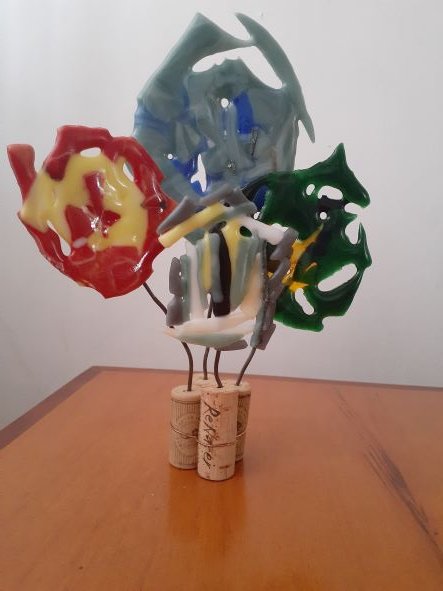
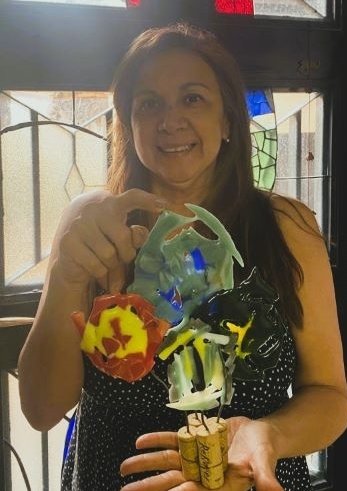

Hola amigos de #HIVEDIY!, espero que todos estén muy bien. Quiero compartir con ustedes una de mis grandes pasiones que es la Vitrofusión, una rama de las Artes del Fuego.
Este blog lo hago de manera informativa, para que tengan idea de que se trata, y quien quita que encuentren su pasión es este arte.
Cuando aplicamos calor a los vidrios, ellos se ablandan. Mientras más calor los vidrios se harán más fluidos y lograrán fusionarse o pegarse, de esta manera obtendremos una pieza sólida.
De esta manera podemos decir que la Vitrofusión, es el proceso mediante el cual logramos fusionar piezas de vidrios, llevándolos a temperaturas entre 600ºC y 950ºC, empleando un horno.

Hello friends of #HIVEDIY, I hope you are all very well. I want to share with you one of my great passions which is the Glass Fusing, a branch of the Fire Arts.
This blog I do it in an informative way, so that you have an idea of what it is about, and who knows if you find your passion is this art.
When we apply heat to the glass, they soften. The more heat the glasses will become more fluid and will be able to fuse or stick together, thus obtaining a solid piece.
In this way we can say that glass fusing is the process by which we fuse pieces of glass, taking them to temperatures between 600ºC and 950ºC, using an oven.
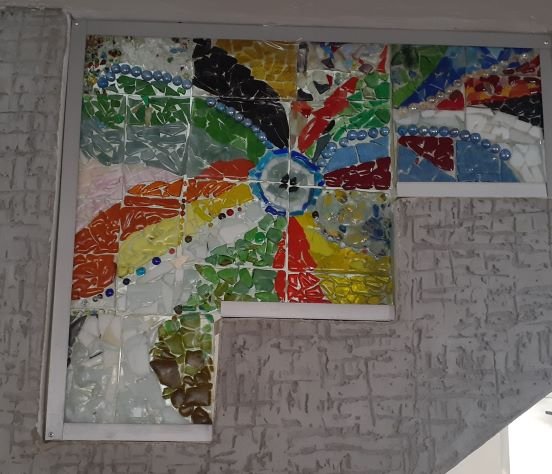
Proyecto escalera. Oct. 2021 Tecnica Vitrofusión, con variedad de vidrios de colores. / Staircase project. Oct. 2021 Glass Fusing technique, with a variety of colored glass.
Entonces que necesitaremos para comenzar con este arte?.
Necesitamos piezas de vidrio, herramientas para su corte, un horno que alcance temperaturas desde 600 grados centígrados, aislante y por supuesto un equipo de seguridad (guantes y lentes de protección).
El vidrio más común es el denominado Float o ventana; sin embargo todos los vidrios pueden ser usados, pero debemos tener en cuenta siempre el coeficiente de dilatación y la compatibilidad que es una característica necesaria y obligatoria cada vez vamos a juntar dos o más vidrios juntos.
Decimos que dos vidrios son compatibles, cuando pueden ser fundidos juntos y luego al enfriarse a temperatura ambiente, no presentan rajaduras.
No se deben combinar vidrios NO compatibles, porque corremos el riesgo que se partan al enfriarse.
So what will we need to start with this art?
We need pieces of glass, tools for cutting, a furnace that reaches temperatures from 600 degrees Celsius, insulation and of course safety equipment (gloves and goggles).
The most common glass is called float or window glass; however all glass can be used, but we must always take into account the coefficient of expansion and compatibility which is a necessary and mandatory feature every time we are going to join two or more glasses together.
We say that two glasses are compatible when they can be melted together and then when they cool down to room temperature, they do not show cracks.
NON-compatible glasses should not be combined, because there is a risk of cracking when they cool down.

Flores abstractas. Julio 2020 . Técnica Vitrofusion. Materiales: vidrios opalecentes, varillas de bronce y corcho. / Abstract flowers. July 2020 . Glass Fusing technique. Materials: opal glass, bronze rods and cork.
Los vidrios se cortan con herramientas especiales para ello y con la debida protección parar evitar astillas en los ojos y piel. Esto implica el uso obligatorio de lentes y guantes.
Una vez cortados deben separase con herramientas adecuadas y se realiza el esmerilado logrando así que las orillas donde se cortó el vidrio queden lisas y se procede a ensamblar la pieza de acuerdo a la técnica que vayamos a realizar, para luego ser llevada al horno.
The glass is cut with special tools and with the proper protection to avoid splinters in the eyes and skin. This implies the mandatory use of glasses and gloves.
Once cut, they must be separated with appropriate tools and grinding is performed so that the edges where the glass was cut are smooth and proceed to assemble the piece according to the technique that we are going to perform, and then be taken to the oven.
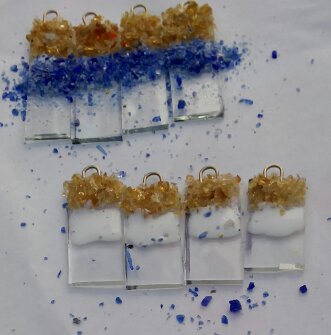
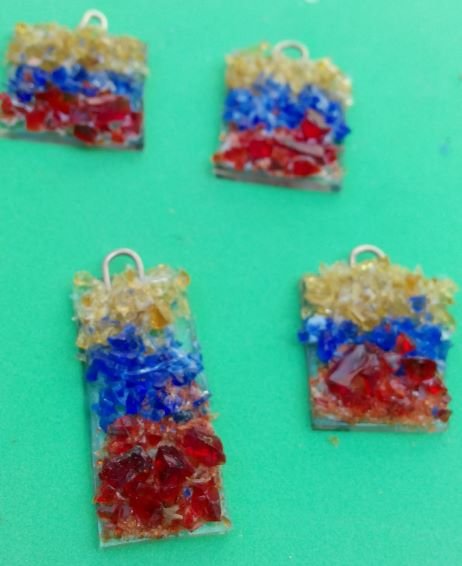
Dijes Venezuela. 2017. Técnica vidrio sobre vidrio molido./ Dijes Venezuela. 2017. Technique glass on ground glass.
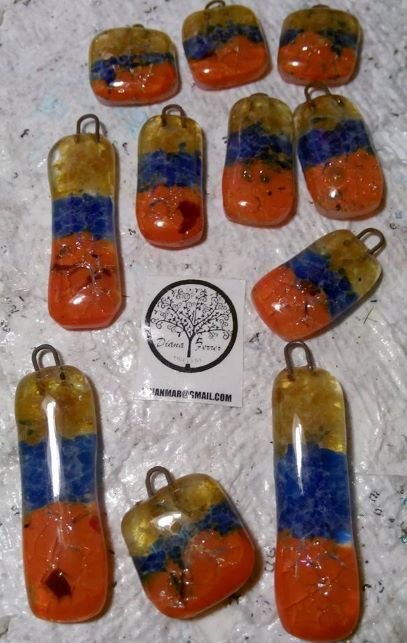
Las técnicas más conocidas son:
Básica: Consiste en llevar al horno un solo vidrio pintado con pigmentos u óxidos.
Laminado: Esta técnica se realiza, cuando colocamos un vidrio sobre el otro, ya sea con pigmentos o con pedazos de vidrio compatibles, formando una especie de sándwich.
Termoformado: Es cuando tenemos un molde y colocamos el vidrio sobre él, para que cuando horneé tome la forma.
De acuerdo a la temperatura logramos obtener diferentes comportamientos en los vidrios:
Decimos que es Fusión Completa, cuando la unión de dos o más piezas de vidrio se realiza a una temperatura de 788ºC a 843ºC.
Caída libre: Nos permite el modelado del vidrio doblándolo por encima o en un molde (694ºC a 704ºC).
Los procesos del horneado varían de acuerdo a la técnica, espesor de vidrio y a la temperatura seleccionada.
Cuando cargamos el horno debemos tener en cuenta que debemos distribuir las piezas para que la masa a calentar (que absorbe el calor) sea pareja dentro del horno y así no tener diferencias de temperatura.
También debemos colocar Antiadherentes para evitar que los vidrios al fundirse se peguen pegarse al soporte o molde.
Cabe destacar antes de comenzar a usar el horno debemos hacer pruebas de ensayo y error hasta que conozcamos como trabaja el horno y la temperatura ideal.
The best known techniques are:
Basic: It consists of bringing to the oven a single glass painted with pigments or oxides.
Laminated: This technique is performed when we place one glass on top of the other, either with pigments or with pieces of compatible glass, forming a kind of sandwich.
Thermoforming: This is when we have a mold and we place the glass on it, so that when baked it takes the shape.
According to the temperature we get different behaviors in the glass:
We say it is Complete Fusion, when the union of two or more pieces of glass is made at a temperature of 788ºC to 843ºC.
Free fall: Allows us to model the glass by bending it over or in a mold (694ºC to 704ºC).
The baking processes vary according to the technique, glass thickness and the selected temperature.
When we load the oven we must take into account that we must distribute the pieces so that the dough to be heated (which absorbs the heat) is even inside the oven and thus not have temperature differences.
We must also place non-stick to prevent the glass from sticking to the support or mold when melting.
It should be noted that before starting to use the oven, we must make trial and error tests until we know how the oven works and the ideal temperature.
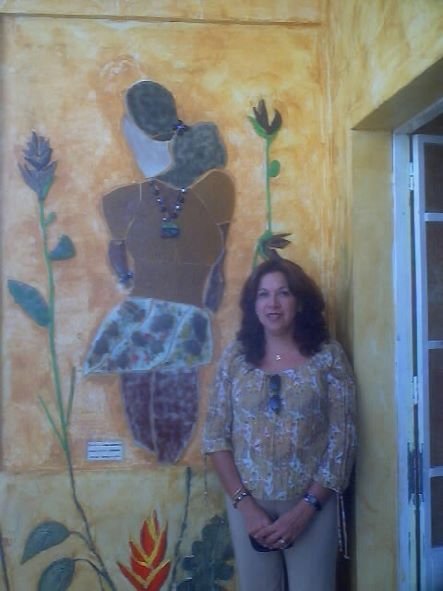
>Mujer. Mayo 2008 . Técnica Vitrofusion. Escuela de Arte Cacique Charaima. Maracay. De mi autoria. / Female. May 2008 . Glass Fusing technique. School of Art Cacique Charaima. Maracay. Of my authorship
He utilizado esta técnica para hacer piezas utilitarias, joyería y adornos entre otros.
I have used this technique to make utilitarian pieces, jewelry and ornaments among others.
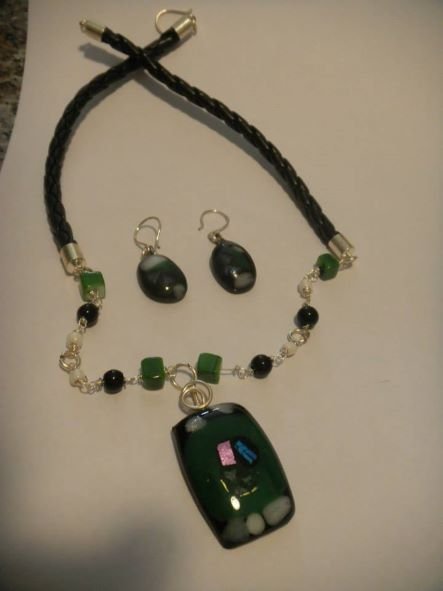
>Dije de vidrio con incrustaciones, ensamblado para collar. Abril 2010/ Glass pendant, assembled for necklace. April 2010.
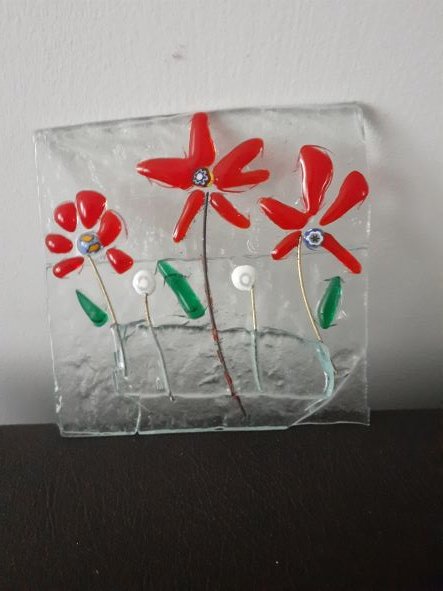
>Cuadro de flores con varas de bronce inscrustadas. Nov 2021./ Picture of flowers with bronze rods inlaid. Nov 2021.
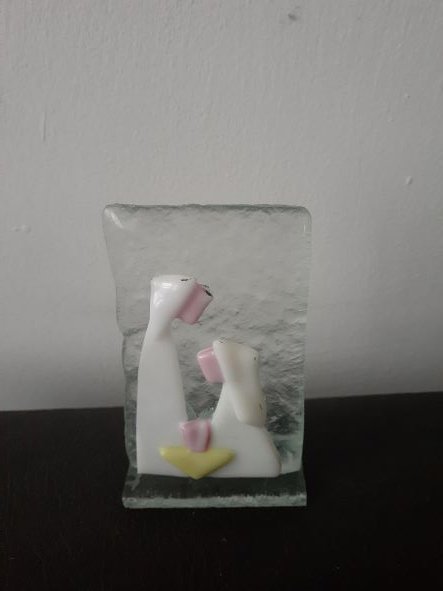
>Jesús, María y José. Nov 2021 / Jesus, Mary and Joseph. Nov 2021.
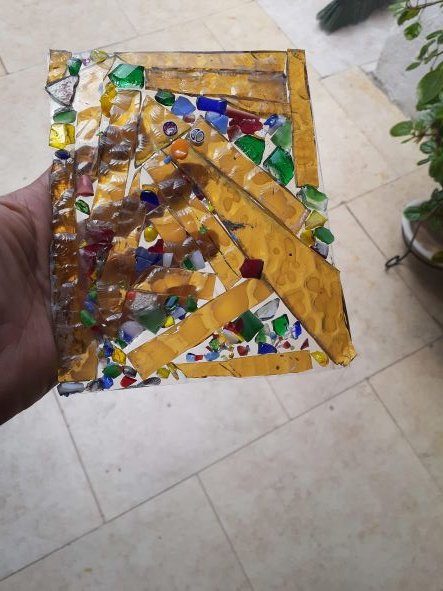
>Panel con vidrios amarillos y murrinas. Julio 2021./ Panel with yellow glass and murrines. July 2021.

Espero le haya parecido interesante, esta rama de las Artes del Fuego y que además nos permite cuidar el ambiente con el uso de reciclaje de vidrio.
Muchas gracias por visitar mi blog @jidianmar. Les envió muchas bendiciones, que tengan un excelente día, cuídense y pásenla bien.

Fotos de mi autoría derechos de autor reservados
Cámara: iphone11
Piezas de vitrofusión originales, de mi pertenencia.
Traducido con www.DeepL.com/Translator (versión gratuita)
Photos by me copyright reserved
Camera: iphone11
Original glass fusing pieces, my own.
Translated with www.DeepL.com/Translator (free version)
